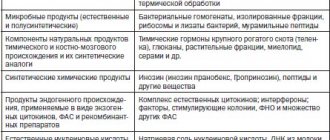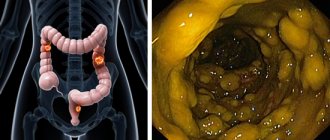Pharmacological properties of the drug Exifin tablets
A synthetic antifungal drug from the group of allylamines with a wide spectrum of antifungal action. In low concentrations it has fungicidal activity against dermatophytes, molds and some dimorphic fibes. The effect on yeast fibes can be fungicidal or fungistatic depending on the type of fibe. The drug inhibits the biosynthesis of sterols in the fungal cell, which leads to ergosterol deficiency, accumulation of squalene inside the cell and its death. Exifin does not affect the metabolism of hormones or other drugs. Exifin is effective against pathogens of dermatomycosis (Trichophyton spp., Microsporum canis and Epidermophyton floccosum), yeast-like fibs of the genus Candida. Unlike topical application, its oral administration is ineffective against Pytiriasis versicolor. When administered orally, the drug accumulates in the skin and nails in a fungicidal concentration. 2 hours after taking 250 mg of terbinafine, its maximum concentration in blood plasma is reached, which is 0.97 mcg/ml; simultaneous food intake does not affect its bioavailability. Terbinafine is almost completely bound to plasma proteins (99%). It quickly diffuses through the dermis and accumulates in the lipophilic stratum corneum of the epidermis. Excreted with the secretion of the sebaceous glands. High concentrations are created in hair follicles, hair, oily skin and in the nail plate. Biotransformation in the liver leads to the formation of metabolites that do not have antifungal activity and are excreted from the body mainly in the urine. The half-life is 17 hours. It does not accumulate in the body. No changes in pharmacokinetics were noted depending on the patient’s age, however, in patients with impaired renal or liver function, the rate of drug excretion from the body may be reduced, resulting in a higher concentration of terbinafine in the blood plasma.
Results of a clinical study of exifin in onychomycosis
With the introduction of systemic antimycotics into practice, a real opportunity has emerged to help patients suffering from onychomycosis. Considering the possibility of development of resistance of mycotic pathogens to drugs, a wide selection of antifungal agents is needed.
Since 1993, in our country, terbinafine, a drug from the class of allylamines, has been widely used in the treatment of onychomycosis caused by dermatophytes. According to various researchers, cure of onychomycosis was observed in 92-100% of cases, depending on the clinical form of the lesion.
This report presents the results of a clinical study of terbinafine (exifina, Dr. Reddy's Laboratories Ltd., India) in tablets containing 250 mg of terbinafine hydrochloride, conducted at the Department of Mycology of the Central Research Institute of Medical Sciences of the Ministry of Health of the Russian Federation. The drug was registered in Russia in December 1999. Exifin was prescribed to 46 patients with onychomycosis (22 women, 20 men, and four children aged 4 to 14 years). Currently, 42 people are being observed (4 patients stopped treatment and did not attend follow-up examinations, and therefore were excluded from the observation group). The age of the patients ranged from 4 to 73 years. The duration of the disease ranged from 5 months. up to 40 years old. The diagnosis was confirmed microscopically in all patients, and culturally in 6 patients (growth of Trichophyton rubrum was obtained). Damage to the nail plates of the feet was observed in 36 patients, feet and hands - in 6. There were 24 patients with a hypertrophic form, 12 with a normotrophic form, and 6 with a mixed form. Multiple nail lesions were observed in 18, single - in 24 patients.
Before starting therapy, all patients underwent a biochemical study of liver function. The study did not include pregnant women, lactating women, patients with chronic pathology of the liver and kidneys, as well as those who had recently been treated with local and systemic antimycotics. Adults received exifin 250 mg
daily, children weighing up to 20 kg - 62.5 mg, from 20 to 40 kg - 125 mg, over 40 kg - 250 mg. The duration of treatment in 28 patients was 3 months, in 7 patients - 4 months, in another 7 - 2 months. (therapy continues). Clinical and mycological cure was achieved in 19 patients: after 3 months. from the start of treatment in 6 patients, after 4 months. - at 9, after 5 months. - in 2, after 6 months. - at 2.
16 patients are under observation after completion of three months of therapy (until the nail plates of the first toes grow completely), of which:
- a significant improvement (growth of more than 50% of the healthy nail area) was noted in 8 patients after 3 months, in 3 patients after 4 months, and in 1 patient after 5 months. from the start of treatment;
- improvement (growth up to 50% of the healthy nail area) in 4 people after 3 months. from the start of therapy; in 7 patients after 2 months. from the start of treatment, positive dynamics were registered - healthy nails grew 2-3 mm from the matrix; patients continue treatment.
With the introduction of systemic antimycotics into practice, a real opportunity has emerged to help patients suffering from onychomycosis. Considering the possibility of development of resistance of mycotic pathogens to drugs, a wide selection of antifungal agents is needed.
All patients tolerated exifin therapy well; only one patient developed short-term painful sensations in the epigastric region on the third day of taking the drug, which persisted for four days; treatment did not stop.
As an illustration, we present an extract from the outpatient card (No. 11388) of patient A., 42 years old, with a diagnosis of rubrophytosis of the nails and skin of the feet and right hand. He has been ill with onychomycosis for more than 10 years. Upon examination, lesions were found in all toenails with involvement of the matrix, the nail on the fourth finger of the right hand (distal-lateral lesion on 1/3 of the area). The skin of the soles and right palm showed severe dryness, mealy and ring-shaped peeling. The patient received terbinafine (exifin) 250 mg once a day for 3 months. A month after the start of treatment, the skin rashes had practically resolved, and healthy plate growth was noted on the hand. After 2.5 months. On the first toes of the toes there are healthy nails on 1/2 of the area, on the rest - on 2/3, a cure has occurred on the hands. At a follow-up examination after 5 months. clinical and mycological cure was stated.
Our observations allow us to conclude that exifin is a highly effective drug in the treatment of patients with onychomycosis caused by Trichophyton rubrum. The cure period ranges from 3 to 6 months; the drug is well tolerated; The relatively low cost of exifin makes it possible to treat a larger number of patients.
Use of the drug Exifin tablets
For adults, Exifin is prescribed orally 250 mg once a day; children weighing ≤20 kg - 62.2 mg/day, 20-40 kg - 125 mg/day, 40 kg - 250 mg/day. There are no data on the use of the drug in children under 2 years of age (body weight ≤12 kg). The duration of treatment depends on the severity of the infection and the type of pathogen. Thus, for interdigital mycosis and lesions of the soles, the duration of treatment is 2–6 weeks, for shingles mycosis and cutaneous candidiasis - 24 weeks. Complete disappearance of the symptoms of the disease occurs after a few weeks. For onychomycosis, the duration of treatment in most cases ranges from 6 weeks to 3 months. If nail growth is slow, a longer course of treatment may be needed. If after 2 weeks there are no signs of improvement, microbiological verification of the diagnosis is necessary.
Exifin, 16 pcs., 250 mg, tablets
Irregular use of terbinafine or premature cessation of treatment leads to relapse of the disease.
The duration of therapy can be influenced by factors such as, for example, the presence of concomitant diseases, the condition of the nails at the beginning of the course of treatment.
If after 2 weeks of treatment of a skin infection there is no improvement in the condition, it is necessary to re-determine the causative agent of the disease and its sensitivity to the drug.
Systemic use for onychomycosis is justified only in the case of total damage to most nails, the presence of severe subungual hyperkeratosis, and the ineffectiveness of previous local therapy. When treating onychomycosis, a clinical response is usually observed several months after mycological cure and cessation of treatment, which is due to the rate of regrowth of a healthy nail. Removal of nail plates is not required when treating onychomycosis of the hands for 3 weeks and onychomycosis of the feet for 6 weeks.
In the presence of severe renal failure (Cl creatinine <50 ml/min or creatinine in the blood >300 µmol/l), if liver function is impaired, the dose of terbinafine should be halved.
In the presence of liver disease, the clearance of terbinafine may be reduced. For reduced liver function, half the adult dose is prescribed. During treatment, it is necessary to monitor the level of liver transaminases in the blood serum. In rare cases, cholestasis and hepatitis occur after 3 months of treatment. If signs of liver dysfunction appear (weakness, persistent nausea, loss of appetite, abdominal pain, jaundice, dark urine or colorless stools), the drug should be discontinued.
Prescribing terbinafine to patients with psoriasis requires increased caution, because In very rare cases, terbinafine can trigger a psoriasis flare-up.
When treating with terbinafine, general hygiene rules should be observed to prevent the possibility of re-infection through underwear and shoes. During treatment (every 2 weeks) and at the end of it, it is necessary to carry out antifungal treatment of shoes, socks and stockings.
Effect on the ability to drive a car and operate machinery: terbinafine does not affect the ability to drive a car or perform work that requires increased concentration.
Exifin® cream is for external use only. You should avoid getting it in your eyes, because... it may cause irritation. If the drug accidentally gets into your eyes, they should be immediately rinsed with running water, and if persistent irritation develops, you should consult a doctor. If allergic reactions develop, the drug must be discontinued.
Special instructions for the use of the drug Exifin tablets
patients with severe renal and/or liver failure should be prescribed the drug in lower doses. When prescribing the drug to elderly patients, the possibility of having impaired liver or kidney function should be taken into account. Experimental studies have not revealed the embryotoxic effect of terbinafine, but clinical experience with the drug in pregnant women is insufficient. It is not recommended to use the drug during pregnancy, especially in the first trimester, in the absence of absolute indications for its use. Exifin passes into breast milk, so breastfeeding should be stopped during treatment.
Exifin (250mg)
INSTRUCTIONS for use of the medicinal product for medical use EXIFIN®
Registration number: P N011536/01
International nonproprietary name: terbinafine
Chemical name: [(E)-N-(6,6-dimethyl-2-hepten-4-inyl)-N-methyl-1-naphthalenemethanamine hydrochloride].
Dosage form: tablets.
Compound:
Each tablet contains: Active substance: terbinafine hydrochloride 281.31 mg (based on 250 mg of terbinafine). Excipients: microcrystalline cellulose 47 mg, sodium starch glycolate 36.69 mg, pregelatinized starch 25 mg, colloidal anhydrous silicon 3 mg, magnesium stearate 7 mg.
Description: White or almost white round biconvex tablets with a smooth surface on both sides.
Pharmacotherapeutic group : Antifungal agent.
ATX code: D01BA02
PHARMACOLOGICAL PROPERTIES Pharmacodynamics: Terbinafine belongs to the group of allylamines and has a wide spectrum of antifungal action. In low concentrations, it has a fungicidal effect on dermatophytes Trychophyton (T. rubrum, T. mentagrophytes, T. tonsurans, T. verrucosum, T.violaceum), Microsporum canis, Epidermophyton floccosum, molds (e.g. Aspergillus, Cladosporium, Scopulariopsis brevicalius) , yeasts, mainly Candida albicans, and some dimorphic fungi. Depending on the type of fungus, it has a fungicidal or fungistatic effect on Candida fungi and its mycelial forms. Terbinafine disrupts the early stage of biosynthesis of the main component of the cell membrane of the fungus, ergosterol, by inhibiting the enzyme squalene epoxidase. Squalene epoxidase is not associated with the cytochrome P450 (CYP450) system, therefore terbinafine does not affect the metabolism of hormones and drugs whose metabolism is associated with CYP450. When administered orally, it accumulates in the skin, nails and hair in quantities that have a fungicidal effect. Systemic treatment of pityriasis versicolor caused by Malassezia furfur is ineffective. Pharmacokinetics: When taken orally, it is well absorbed, after 0.8 hours half of the dose taken is absorbed, after 4.6 hours half of the dose taken is distributed in the body. 1-2 hours after oral administration of a single 250 mg dose, the maximum concentration of the drug in the blood plasma reaches 0.97 mcg/ml. Bioavailability – 80%. Food intake does not affect the bioavailability of terbinafine. Terbinafine intensively binds to blood plasma proteins (99%), quickly distributes in tissues, penetrates the dermal layer of the skin and nail plates. Penetrates the secretion of the sebaceous glands and accumulates in high concentrations in the hair follicles, hair, skin and subcutaneous tissue. After just a few weeks of treatment, it accumulates in the nails in concentrations that provide a fungicidal effect. The half-life is 16-18 hours, the half-life of the terminal phase is 200-400 hours. It is biotransformed in the liver to inactive metabolites: 80% of the dose taken is excreted in the urine in the form of metabolites, the rest (20%) in the feces. Does not accumulate in the body. The age of patients does not affect the pharmacokinetics of terbinafine, however, elimination may be reduced in cases of kidney or liver damage, leading to high concentrations of terbinafine in the blood. Excreted in breast milk. Systemic treatment of pityriasis versicolor caused by Malassezia furfur is ineffective.
INDICATIONS FOR USE
- Mycoses of the scalp (trichophytia, microsporia).
- Mycoses of the skin and nails caused by Trychophyton (T. rubrum, T. mentagrophytes, T. verrucosum, T violaceum), Microsporum (M. canis, M. gypseum) and Epidermophytom floccosum.
- Onychomycosis.
- Severe, widespread dermatomycosis of smooth skin of the trunk and extremities, requiring systemic treatment.
- Candidiasis of the skin and mucous membranes.
CONTRAINDICATIONS Hypersensitivity to any component of the drug, children under 2 years of age, because There is not enough data on the use of the drug in children weighing less than 12 kg, pregnancy, and breastfeeding. With caution : liver and/or kidney failure, alcoholism, blood diseases, tumors, metabolic diseases, vascular pathology of the extremities, psoriasis. Pregnancy and lactation: Terbinafine is contraindicated during pregnancy due to the lack of sufficient data on its safety during pregnancy. Terbinafine is excreted in breast milk, so its use is contraindicated during breastfeeding.
METHOD OF APPLICATION AND DOSES The duration of treatment and dosage regimen are established individually and depend on the localization of the process and the severity of the disease. Adults: Usual dose: 250 mg (1 tablet) 1 time per day. Onychomycosis: Duration of therapy is about 6-12 weeks. If the nails of the fingers and toes are affected (except for the big toe) or if the patient is young, the duration of treatment may be less than 12 weeks. For a big toe infection, a 3-month course of treatment is usually sufficient. In rare cases, with a slow rate of nail growth, longer treatment of up to 6 months or more may be required. Fungal skin infections: The duration of treatment for interdigital, plantar or “sock” localization of infection is 2-6 weeks, for mycoses of other parts of the body: legs - 2-4 weeks, torso - 4 weeks; for mycoses caused by Candida – 2-4 weeks; for mycoses of the head caused by Microsporum canis - more than 4 weeks. Children: usually prescribed 125 mg (1/2 tablet). The duration of treatment for mycoses of the scalp is about 4 weeks; for infection with Microsporum canis, it may be longer. For body weight less than 20 kg – 62.5 mg (1/4 tablet) 1 time per day. Weight from 20 to 40 kg – 125 mg (1/2 tablet) 1 time per day. With a weight of more than 40 kg - 250 mg (1 tablet) 1 time per day. Elderly patients are prescribed the drug in the same doses as adults. In case of severe impairment of liver and/or kidney function (creatinine clearance <50 ml/min or blood creatinine concentration more than 300 µmol/l): 125 mg 1 time per day.
SIDE EFFECTS Side effects are usually of moderate to mild severity and are temporary. Common side effects from the digestive system: feeling of a full stomach, dyspepsia, nausea, loss of appetite, abdominal pain, diarrhea; infrequently – disturbance of taste perception, incl. loss of it, which is restored several weeks after stopping treatment; rarely - cholestasis, jaundice, hepatitis, asymptomatic increase in liver transaminases. Despite the lack of proof of the causal relationship of these disorders with terbinafine, if hepatobiliary dysfunction develops, treatment with Exifin should be discontinued. From the side of the central nervous system: rarely - paresthesia, hypoesthesia, dizziness; very rarely - depression, increased anxiety. From the musculoskeletal system: often – arthralgia, myalgia. From the hematopoietic system: very rarely - neutropenia, agranulocytosis, thrombocytopenia. From the immune system: often – urticaria, erythema multiforme; rarely - systemic allergic reactions (reactions similar to serum sickness, angioedema); very rarely - severe skin reactions (toxic epidermal necrolysis, Stevens-Johnson syndrome, photosensitivity). If skin rashes progress, treatment with terbinafine should be discontinued. Other: often – headache, feeling unwell, feeling tired; very rarely - exacerbation of psoriasis, increased hair loss.
INTERACTIONS WITH OTHER DRUGS Has virtually no effect on the clearance of drugs metabolized by cytochrome P450 (for example, cyclosporine, terfenadine, tolbutamide, triazolam, oral contraceptives). Inhibits the CYP2D6 isoenzyme and interferes with the metabolism of drugs such as tricyclic antidepressants and selective serotonin uptake blockers (eg, desipramine, fluvoxamine), β1-blockers (metoprolol, propranolol), antiarrhythmics (flecainide, proavfenone), MAO-B inhibitors (eg ., selegiline) and antipsychotics (eg, chlorpromazine, haloperidol). Drugs that induce CUR450 enzymes (eg, rifampicin) can accelerate the elimination of terbinafine from the body. Drugs that are CYP450 inhibitors (eg, cimetidine) may slow down the metabolism and elimination of terbinafine from the body. If these drugs are used concomitantly, a dose adjustment of terbinafine may be required. Menstrual irregularities are possible when taking terbinafine and oral contraceptives simultaneously. Reduces caffeine clearance by 21% and prolongs its half-life by 31%. Does not affect the clearance of antipyrine, digoxin, warfarin. Ethanol and other hepatotoxic drugs increase the risk of hepatotoxicity.
OVERDOSE Symptoms: nausea, vomiting, pain in the lower abdomen, in the epigastric region. Treatment: gastric lavage followed by the administration of activated charcoal and/or symptomatic therapy.
SPECIAL INSTRUCTIONS Irregular use of terbinafine or premature cessation of treatment leads to relapse of the disease. The duration of therapy can also be influenced by factors such as, for example, the presence of concomitant diseases, the condition of the nails at the beginning of the course of treatment. If after 2 weeks of treatment of a skin infection there is no improvement in the condition, it is necessary to re-determine the causative agent of the disease and its sensitivity to the drug. Systemic use for onychomycosis is justified only in the case of total damage to most nails, the presence of severe subungual hyperkeratosis, and the ineffectiveness of previous local therapy. When treating onychomycosis, a clinical response is usually observed several months after mycological cure and cessation of treatment, which is due to the rate of regrowth of a healthy nail. Removal of nail plates is not required when treating onychomycosis of the hands for 3 weeks and onychomycosis of the feet for 6 weeks. In the presence of severe renal failure (creatinine clearance less than 50 ml/min or blood creatinine more than 300 µmol/l), if liver function is impaired, the dose of terbinafine should be halved. In the presence of liver disease, the clearance of terbinafine may be reduced. For reduced liver function, half the adult dose is prescribed. During treatment, it is necessary to monitor the level of liver transaminases in the blood serum. In rare cases, cholestasis and hepatitis occur after 3 months of treatment. If signs of liver dysfunction appear (weakness, persistent nausea, loss of appetite, abdominal pain, jaundice, dark urine or colorless stools), the drug should be discontinued. Prescribing terbinafine to patients with psoriasis requires increased caution, because in very rare cases, terbinafine can cause an exacerbation of psoriasis. When treating with terbinafine, general hygiene rules should be followed to prevent the possibility of re-infection through underwear and shoes. During treatment (every 2 weeks) and at the end of it, it is necessary to carry out antifungal treatment of shoes, socks and stockings.
Effect on the ability to drive a car and operate machinery: terbinafine does not affect the ability to drive a car or perform work that requires increased concentration.
RELEASE FORM: 4 tablets in PVC/aluminum blister packs, 4, 5, 7 or 10 blisters along with instructions for use are placed in a cardboard box. 16 tablets in PVC/aluminum blister, 1 blister along with instructions for use is placed in a cardboard box.
SHELF LIFE 3 years. Do not use after the expiration date stated on the packaging.
STORAGE CONDITIONS: In a dry place, protected from light, at a temperature not exceeding 25 °C. Keep out of the reach of children.
CONDITIONS FOR DISCHARGE FROM PHARMACIES By doctor's prescription.
MANUFACTURER Dr. Reddy's Laboratories Ltd., India.
The address of the manufacturing place of Plot No. 137, 138 & 146, SV Co-Op, Industrial Estate, Bollaram Village, Jinnaram Mandal, Medak District, Telangana State, INDIA is 502 325.
Information about complaints and adverse drug reactions should be sent to the following address: Representative office: 115035, Moscow, Ovchinnikovskaya embankment, 20, building 1 tel. Fax



![Table 3. Pharmacokinetic and pharmacodynamic parameters of fluoroquinolones with a single standard dose taken orally [7, 13]](https://irknotary.ru/wp-content/uploads/tablica-3-farmakokineticheskie-i-farmakodinamicheskie-parametry-ftorhinolonov-pri-odnokratnom-prieme-330x140.jpg)

